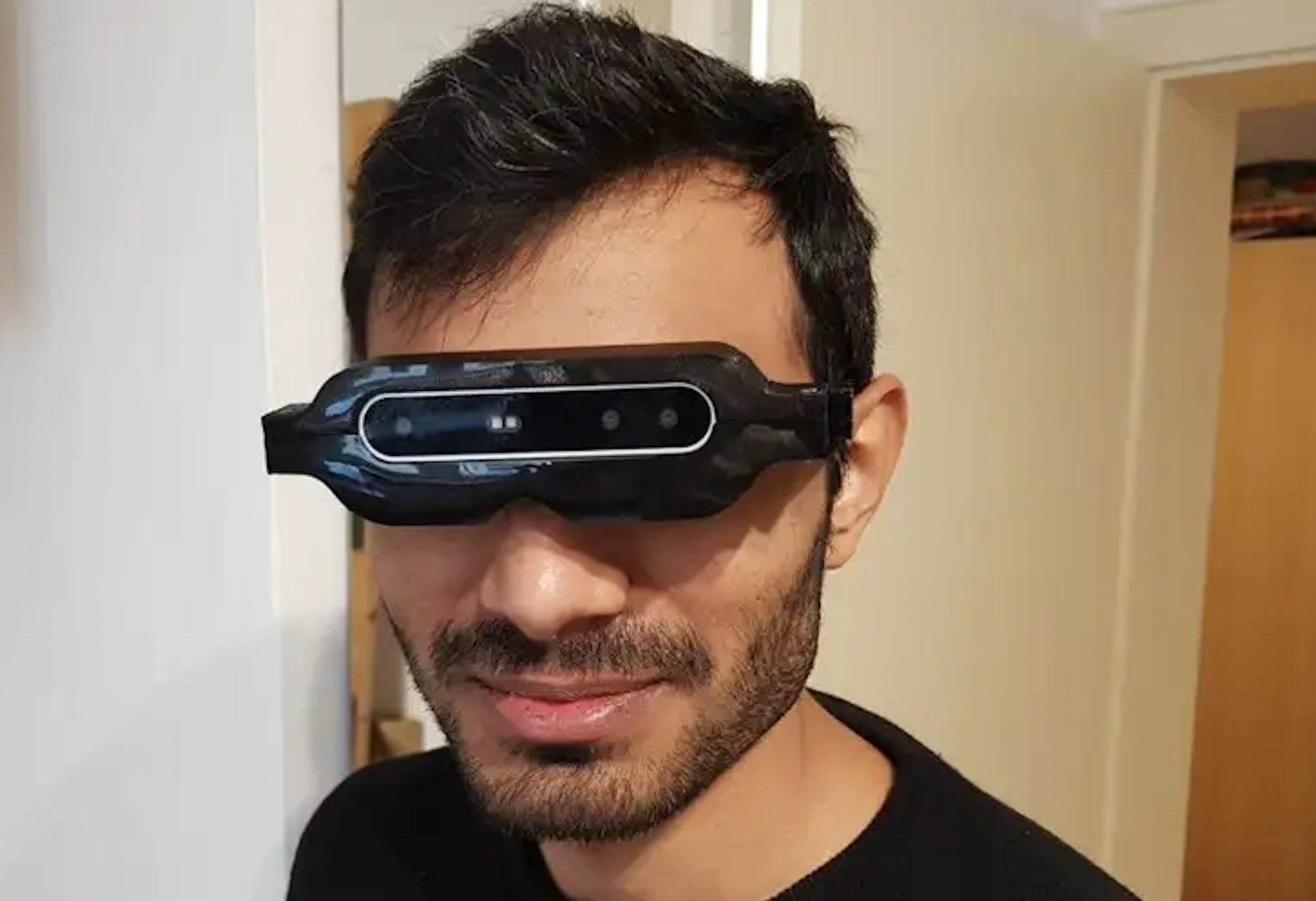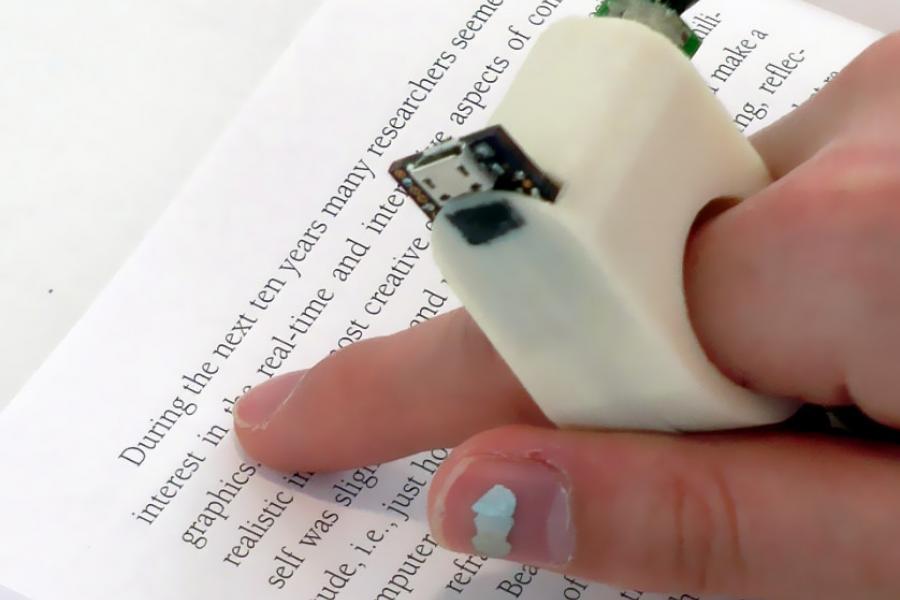OCR Devices for the Blind: Turning Text into Speech with Ease
OCR Devices for the Blind: Turning Text into Speech with Ease
Blog Article
A Guide to Life-Changing Assistive Modern Technology for the Blind and Aesthetically Impaired
The advancement of assistive innovation has actually ushered in a transformative era for individuals who are blind or visually impaired, offering devices that enhance freedom and enhance everyday experiences. Advancements such as smart navigating devices and AI-driven applications are redefining how customers interact with their environments, while obtainable reading options and wise home modern technologies promise to further boost the top quality of life.
Smart Navigating Equipment
Smart navigation devices are reinventing the means people that are blind or aesthetically damaged interact with their environment. These sophisticated innovations, which integrate general practitioners, audio comments, and haptic signals, give users with vital information about their environments, improving their freedom and movement.
One famous instance is using smart canes furnished with sensors that detect obstacles and provide real-time responses via resonances or audio signs. These tools enable individuals to navigate complicated atmospheres, such as hectic roads or crowded public rooms, with boosted confidence. Furthermore, wearable devices, such as smart glasses, are being created to assist in recognizing faces, reviewing text, and identifying objects, additionally augmenting the user's spatial awareness.
Moreover, clever navigation tools are significantly integrating artificial intelligence to analyze information and adjust to users' choices. This customized method not just enhances navigation efficiency yet likewise cultivates a sense of empowerment amongst customers. As technology continues to breakthrough, the potential for wise navigating tools to develop a more inclusive and accessible world for individuals who are visually impaired or blind remains encouraging, inevitably improving their everyday experiences and communications.
Innovative Mobile Apps
Mobile applications are emerging as powerful devices for aiding individuals who are aesthetically damaged or blind, providing a variety of functionalities that enhance daily living. These applications harness advanced modern technology to help with everyday jobs, enhance availability, and advertise freedom.
One category of ingenious mobile applications focuses on aesthetic recognition. Applications like Be My Eyes attach customers with sighted volunteers via video clip calls, allowing real-time assistance for tasks such as checking out tags or browsing strange settings. Likewise, apps like Seeing AI use man-made intelligence to explain surroundings, checked out text, and recognize objects, offering customers with essential info at their fingertips.
One more substantial area is navigating and alignment. Apps such as Aira and Neighboring Traveler give audio support, assisting individuals browse metropolitan rooms with simplicity. They use individualized support, enabling a more certain exploration of the environment.
Moreover, health and wellness apps accommodate specific demands, such as drug management and health and fitness tracking. These applications intend to cultivate an alternative approach to health, making certain that individuals can maintain their health separately.
Wearable Assistive Devices
Wearable assistive devices stand for a significant development in technology developed to support individuals that are aesthetically damaged or blind. These gadgets enhance mobility and self-reliance by providing real-time feedback about the surrounding setting. Among one of the most remarkable wearable technologies are wise glasses furnished with sensing units and cameras, which can identify obstacles and relay vital info via sound signs.

One more innovative alternative consists of wrist-worn gadgets that use ultrasonic waves to identify barriers and give navigational help. These gadgets frequently come with personalized setups, enabling users to tailor the alerts to their particular needs.
The combination of man-made knowledge in wearable assistive innovation is also significant, as it continuously improves the precision and responsiveness of these gadgets. On the whole, wearable assistive devices are changing the lives of the blind and visually impaired, cultivating higher autonomy and improving high quality of life with innovative services.
Available Checking Out Solutions
Available analysis services play an essential i loved this role in making it possible for individuals that are visually damaged or blind to involve with text across numerous layouts. These solutions encompass a series of modern technologies and devices made to improve reading experiences, from typical print materials to electronic web content.
One famous remedy is Optical Personality Acknowledgment (OCR) modern technology, which transforms published text into digital format, enabling customers to listen to or check out the content using screen readers. In addition, specialized e-readers equipped with text-to-speech capacities offer personalized reading experiences, making it possible for users to readjust font dimensions and history shades for boosted presence.
An additional efficient method is braille screens, which offer tactile feedback by transforming electronic message into braille. This allows individuals to go through touch, fostering better self-reliance and access to literature. Mobile applications created for checking out checked papers or books can encourage users with instant access to a large collection of materials (Assistive technology for the blind).

Smart Home Technologies
Smart home innovations have actually reinvented the means individuals who are blind or visually damaged engage with their childrens glasses living atmospheres, improving both self-reliance and security. These cutting-edge services utilize automation and connection to produce an available space tailored to the needs of individuals.
Smart speakers and voice-activated assistants supply hands-free control over different tools, allowing individuals to readjust lighting, protection, and temperature level measures through basic voice commands. This performance decreases reliance on sighted assistance and fosters a feeling of freedom. Furthermore, clever illumination systems can be personalized to provide auditory responses or tactile signs, making it possible for individuals to browse their homes more effectively.
Furthermore, security systems furnished with smart cams and sensing units can send out real-time signals to users, improving individual security without requiring visual confirmation. Automated door locks use comfort, enabling individuals to protect their homes easily.
Incorporating wise home technologies not only boosts day-to-day living but also encourages social communication through linked gadgets - Speech-to-text devices for low vision. With recurring innovations in assistive modern technology, the future shows up encouraging, as even more remedies will certainly emerge to further equip individuals that are blind or aesthetically impaired, guaranteeing a more comprehensive and independent way of living
Final Thought
To conclude, the improvements in assistive modern technology for the blind and visually impaired represent a significant leap toward enhancing freedom and lifestyle. Smart navigation tools, ingenious mobile applications, wearable tools, available analysis services, and wise home innovations collectively cultivate an inclusive atmosphere. This integration of innovation not only enhances mobility and everyday living yet also encourages people to involve fully with their environments, promoting greater autonomy and involvement in society.
Advancements such as clever navigation tools and half moon reading glasses AI-driven applications are redefining exactly how individuals engage with their surroundings, while obtainable analysis remedies and wise home modern technologies guarantee to further boost the high quality of life. As technology continues to development, the possibility for clever navigating devices to produce a more easily accessible and inclusive world for people that are aesthetically damaged or blind continues to be appealing, ultimately improving their everyday experiences and interactions.
Wearable assistive tools represent a considerable advancement in innovation created to support individuals that are visually impaired or blind. Amongst the most significant wearable innovations are clever glasses geared up with video cameras and sensors, which can identify barriers and relay vital details via sound cues.
Smart navigation tools, innovative mobile applications, wearable gadgets, available reading remedies, and smart home innovations jointly promote an inclusive environment.
Report this page